When a Company Goes Into Administration or Liquidation Who Gets Paid First?

Chances are, you’ve googled, “When a company goes into liquidation, who gets paid first?”.
And thankfully, you’ve landed on this page. If a business goes into administration, it cannot pay its financial liabilities when due.
Those the business owes money to are known as creditors. When a firm is liquidised, you may be wondering who should be paid first.
In this blog, let’s look at which creditors are paid first if the organisation ultimately becomes insolvent and its assets are sold to repay the balance due (a winding-up or liquidation).
What Does Company Administration Mean?
When a firm enters administration, it becomes insolvent. Then it’s perhaps ‘wound up’ or placed into liquidation.
Administration is a process by which a professional insolvency consultant selected by the liquidator (the court) gathers and markets the insolvent firm’s assets.
The capital made from these assets is then renumerated to creditors to release the business’s money owed to them.
Administration typically ends the company’s affairs, so the company is ultimately struck off at Companies House.
When a Company Goes Into Administration, Who Gets Paid First?
A legal ‘hierarchy’ implemented by the Insolvency Act 1986 establishes which set of creditors is compensated first throughout a company liquidation.
Once a firm enters administration, it must pay every creditor group entirely, save for ‘prescribed part’ secured creditors, before funds are distributed to the subsequent creditor.
Creditors of a company are categorised as per the below:
- Secured creditors with a fixed charge
- Preferential creditors
- Secured creditors with a floating charge
- Unsecured creditors (including HMRC debt)
- Shareholders
What is the Order of Payment in Liquidation?
- Fixed Charge Secured Creditors
Fixed charge creditors are normally number one to be compensated during insolvency – they have an authorised responsibility or charge regarding certain assets or every asset a company owns.
This company property can be anything from equipment and constructions to apparatus, vehicles, and intellectual property. Secured creditors include leasing companies and banks.
Usually, a bank will only lend if the borrower puts their signature on a document allocating security to the arrears.
Fixed debt significantly reduces the bank’s risk, as it understands it can just take ownership of the asset, should an insolvency event occur.
2. Preferential Creditors
Work staff are next to receive their money, as they’re deemed preferential creditors for unpaid salaries and holiday pay claims.
Secondary preferential creditors also include HMRC, as per the Finance Act 2020.
3. Floating Charge Secured Creditors
Floating charges are normally tendered over non-constant assets like raw materials or work-in-progress.
Holders of floating charges are registered in Companies House by the creditor, and when any insolvency event occurs, this floating charge matures to become fixed.
Part of those assets reserved for floating charge holders is assigned to unsecured creditors in what’s called ‘the prescribed part’ – the monies reserved after selling floating charge possessions.
That is to say, the take-home cost of the insolvency and how much money was subtracted following the 12th September 2003.
This amount is then used to give unsecured lenders more chances to recoup a little of their outstanding capital.
4. Unsecured Creditors
This group includes contractors, customers, trade creditors, suppliers, and claims besides debts and holiday pay by workers.
Essentially, this group involves people or creditor organisations that offer money but who won’t attain certain assets as collateral.
It also includes managers or staff who’ve loaned the firm money non-officially (known as associate creditors) or when wages and earnings for business directors and owners aren’t paid.
5. Shareholders
And last but not least, the insolvent company’s shareholders sit at the bottom of the pile to be reimbursed.
These are the individuals who risked loaning the company money and, thus, aren’t eligible for settlements or reimbursement in a business administration or liquidation unless all of the aforementioned groups have received the money owed.
HMRC is a Secondary Preferential Creditor
If your company debt began after 1st December 2020, HM Revenue and Customs is classed as a secondary preferential creditor, according to The Finance Act 2020.
In other words, HMRC is the next on the list, but only once fixed charge holders and insolvency practitioners have been paid.
However, HMRC is recompensed ahead of floating charge holders, suppliers, company retirement schemes, and customers.
The revised guidelines only relate to taxes the government declares are “held by businesses on behalf of other taxpayers”, including:
- VAT (Value Added Tax)
- PAYE (Pay As You Earn) Income Tax
- NICs (Employee National Insurance Contributions)
- Student loan repayments
- Construction Industry Scheme deductions
Reaching Out If You’re Worried About Company Debt
Each creditor group must be refunded completely before the liquidator can allocate sums of money to the next set.
Once you enter insolvency, it’s vital to boost the interests of creditors, or you may be subject to allegations of illicit or unauthorised trading.
Fixed and floating charges are complicated subjects to understand, especially if several charges have been taken on an asset.
The experts at Hudson Weir will clarify your firm’s financial position and then identify who takes precedence in terms of payment.
What’s more, we’ll make sure you meet your rightful responsibilities as a leader of an insolvent company and help lessen your risk of allegations.
When a company goes into administration who gets paid first – final thoughts
If you manage a firm that you believe is shifting towards insolvency, talk to our friendly team at Hudson Weir today.
It’s best to stop company administration from happening in the first place than it is to deal with it after this has happened.
Thankfully, our team of Insolvency Practitioners are always available to offer hands-on insolvency resolutions to businesses facing financial hardships and debt issues.














